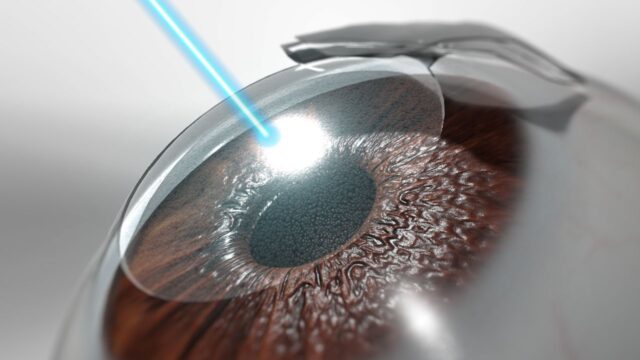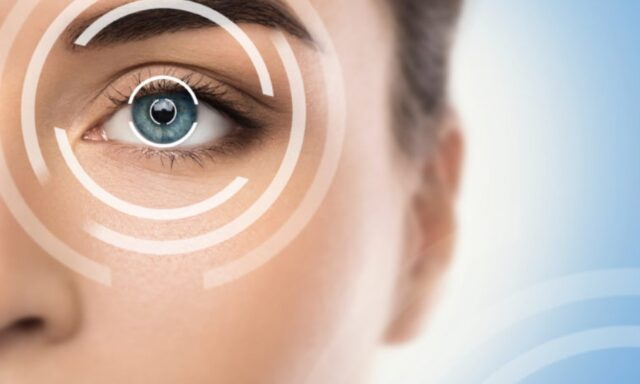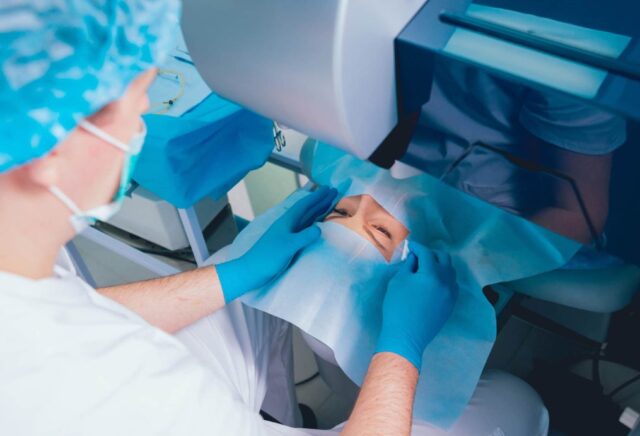
LASIK is an eye surgery that uses lasers to correct eye problems like hypermetropia, myopia, astigmatism, etc. There are several reasons why people decide to go for Lasik surgery. First of all, it rids them of poor eyesight, and people no longer have to regularly depend upon glasses or contact lenses to be able to see things correctly.
Secondly, the surgery is pretty simple, and most patients can resume their regular activities within a few days of the surgery. Thirdly the surgery has high success rates, and lastly, the procedure has become quite affordable with time. Hence people who are considering a LASIK procedure in and around Austin can visit this site for an experienced Lasik surgeon Austin.
How To Quickly Get Back Your Regular Routine After A Lasik Surgery

Refrain From Touching The Eye
It is common to feel some burning sensation, irritation, or pain in the eyes after a surgical procedure. The instantaneous reaction of most people when anything irritates them is to scratch the areas to get rid of the irritant. However, it is advisable to keep your hands away from the eyes after surgery.
The LASIK procedure uses lasers to cut a flap in the cornea (outermost layer) of the eye. After an outer flap is removed, the laser works to change the curvature of the internal corneal layers to correct vision. The outer flap of the cornea remains unstable and takes time to heal after the operation. Hence, if someone scratches or touches the eye, it might disturb the corneal flap.
A disturbed corneal flap can have many severe implications, like astigmatism, weakening of the cornea, etc. Astigmatism results in blurry or double vision due to unevenness in the corneal layer. Thus, it is good to refrain from touching the eyes after the operation. The longer one resists touching the eyes, the faster the recovery process and the lesser the chances of postoperative complications.
Applying All The Prescribed Eye Drops Properly

After the surgery, the doctor will prescribe a list of eye drops to quicken the healing process. There are drops for preventing bacterial infection. Also, there are drops for preventing an inflammatory reaction.
After any surgical procedure, there is a chance of an inflammatory response. The body’s immune system becomes active whenever there is any cut in the body. The immune cells cause redness, itch, and inflammation in any body part that is injured. However, too much inflammation is harmful; hence anti-inflammatory steroid-based drugs and injections are often prescribed after any operation.
Apart from this, there may be a few drops to reduce the pain and drops to treat dry eyes. Dryness causes the eyes to burn and is common after any surgery. The burning sensation happens because the film of tears that covers the eye becomes unstable. It is important to use all the drops in the right time intervals as per the doctor’s prescription.
The drops will be more frequent right after surgery, and they will become less frequent later on. It is a good idea to ask a family member or a friend to stay with you for a few days so that the drops can be given on time. Also, most of the drops have to be stored in the proper condition for them to be effective. Hence, it is prudent to store the drops in the freezer or away from direct light, depending on the instructions stated on the outer cover of the drops.
Following Up With The Doctor

The doctor will prescribe a postoperative checkup plan. It is crucial to visit the doctor on all days as per the check-up plan. Most people start seeing the effects of the surgery after a few hours of the operation. They are able to see things clearly even without a pair of glasses. When they start seeing things clearly, they presume that the procedure was successful and they need not visit the doctor again or follow up with regular checkups.
You can look and visit Lasik Eye Surgeons in Brisbane for more information regarding Lasik surgery.
However, it is inappropriate not to follow the check-up routine as the healing process takes a long time to complete. In the check-up session, the doctor checks for many things, like whether the power correction has been optimum or if there is any problem with the healing of the cornea.
At times the visual acuity may improve, but the power may be over or under-corrected. Hence, though the patient might be able to see better yet, the correction may be suboptimal, and the person may still need spectacles of lower power or another surgery later on.
Taking A Lot Of Rest

Most people can go back to their homes a few hours after the surgery. They can begin light everyday activities like walking, going to work, and even light reading within a few days. However, it is always a good idea to take ample rest and precautions as it accelerates the healing process. People should cut out on screen time as much as possible. The phone should be put on dim light mode, and splashing water directly on the face should be avoided.
It is advisable to use sunglasses and hats whenever someone is going out in bright light. People can also wear anti-glare glasses while working on computers. Also, it is best to avoid contact sports like football, basketball or rugby for some time. Heavy physical activity strains the already injured eye. Retinal tears are very rare after a LASIK surgery, yet excessive strain after any eye operation can cause retinal tears. A retinal tear is a severe condition and can lead to permanent blindness. Hence it is a good idea to avoid strenuous activity a few days after surgery.
Conclusion
LASIK has been curing poor vision in many people for decades. Today it is a tried and tested procedure, and it has become the first choice of many who want to get rid of their glasses permanently. The procedure is affordable, painless, has significantly less postoperative recovery time, and very high patient satisfaction rates.







